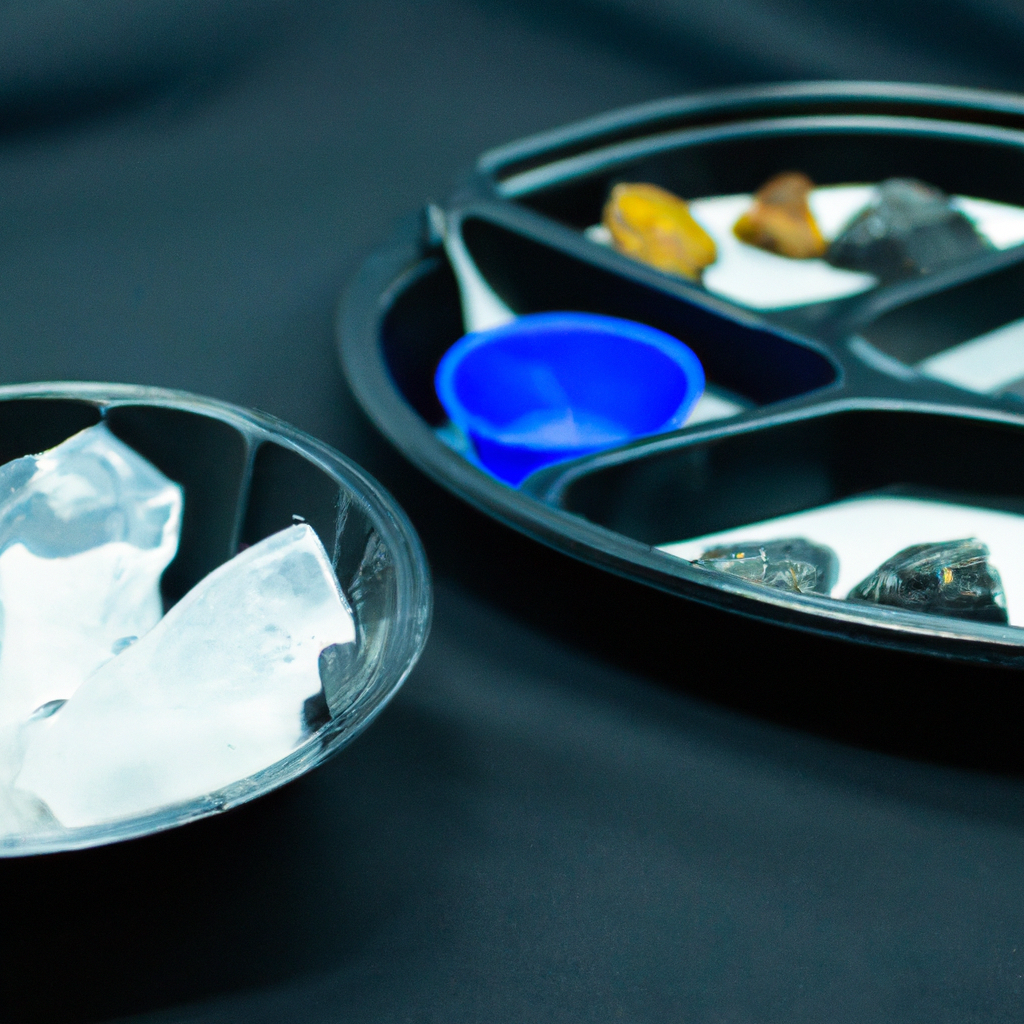-
Table of Contents
“Unlock Your Creativity: Explore the Diverse World of Casting Resins!”
Casting resin is a versatile material widely used in various applications, from art and crafts to industrial manufacturing. Understanding the different types of casting resin is essential for selecting the right product for specific projects. The primary types include epoxy resin, polyurethane resin, and polyester resin, each with unique properties, curing times, and applications. Epoxy resin is known for its strength and clarity, making it ideal for intricate designs and durable finishes. Polyurethane resin offers flexibility and quick curing, suitable for molds and prototypes. Polyester resin, often used in fiberglass applications, is cost-effective but less durable than the other types. By comprehensively understanding these resins, users can make informed choices that enhance their projects’ quality and effectiveness.
Epoxy Resin: Properties and Applications
Epoxy resin is a versatile and widely used material in various industries, known for its exceptional properties and diverse applications. This synthetic polymer is formed by the reaction of epoxide resins with hardeners, resulting in a durable and robust substance that exhibits excellent adhesion, chemical resistance, and mechanical strength. One of the most notable characteristics of epoxy resin is its ability to cure at room temperature, making it accessible for both professional and DIY projects. This property allows users to work with the material without the need for specialized equipment, thus broadening its appeal.
The chemical structure of epoxy resin contributes significantly to its performance. The presence of reactive epoxide groups enables the resin to bond effectively with a wide range of substrates, including metals, wood, glass, and plastics. This strong adhesion is particularly advantageous in applications where structural integrity is paramount, such as in the construction and automotive industries. Furthermore, epoxy resin exhibits low shrinkage during curing, which minimizes the risk of warping or cracking, ensuring that the final product maintains its intended shape and dimensions.
In addition to its adhesive properties, epoxy resin is renowned for its excellent chemical resistance. It can withstand exposure to various solvents, acids, and bases, making it an ideal choice for applications in harsh environments. For instance, epoxy coatings are commonly used to protect metal surfaces from corrosion, while epoxy flooring systems are favored in industrial settings due to their durability and ease of maintenance. This resistance to chemical degradation not only extends the lifespan of the materials but also reduces the need for frequent repairs or replacements, ultimately leading to cost savings.
Moreover, epoxy resin is highly customizable, allowing users to modify its properties to suit specific needs. By adjusting the formulation, one can achieve varying degrees of flexibility, hardness, and thermal stability. This adaptability makes epoxy resin suitable for a wide range of applications, from creating intricate art pieces and jewelry to manufacturing high-performance composites used in aerospace and automotive industries. The ability to incorporate additives, such as pigments and fillers, further enhances its versatility, enabling the creation of aesthetically pleasing and functional products.
Another significant advantage of epoxy resin is its excellent electrical insulating properties. This characteristic makes it a preferred choice for encapsulating electronic components and creating circuit boards, where protection from moisture and environmental factors is crucial. The use of epoxy in electronics not only ensures the longevity of the components but also enhances their performance by providing a stable and reliable environment.
In conclusion, epoxy resin stands out as a remarkable material due to its unique combination of properties, including strong adhesion, chemical resistance, and versatility. Its applications span a wide array of industries, from construction and automotive to arts and electronics, highlighting its importance in modern manufacturing and craftsmanship. As technology continues to advance, the potential for new formulations and applications of epoxy resin will likely expand, further solidifying its role as a fundamental material in various fields. Understanding the properties and applications of epoxy resin is essential for anyone looking to harness its capabilities effectively, whether for professional use or personal projects.
Polyester Resin: Benefits and Limitations
Polyester resin is a widely utilized material in various industries, particularly in the fields of manufacturing, construction, and art. This synthetic resin, derived from the reaction of polyols and acids, is known for its versatility and cost-effectiveness. One of the primary benefits of polyester resin is its affordability compared to other types of casting resins, such as epoxy or polyurethane. This cost advantage makes it an attractive option for both hobbyists and professionals who require a reliable material without incurring significant expenses. Furthermore, polyester resin is relatively easy to work with, allowing for straightforward mixing and application processes. This ease of use is particularly beneficial for those who may be new to casting or for projects that require quick turnaround times.
In addition to its affordability and user-friendliness, polyester resin exhibits excellent mechanical properties. It is known for its strength and durability, making it suitable for a wide range of applications, from creating intricate art pieces to manufacturing robust components for automotive and marine industries. The resin can be reinforced with fiberglass, which enhances its structural integrity and allows for the production of lightweight yet strong materials. This characteristic is particularly advantageous in applications where weight reduction is critical, such as in the aerospace sector.
Moreover, polyester resin offers good resistance to environmental factors, including moisture and UV radiation. This resistance makes it a popular choice for outdoor applications, where exposure to the elements can compromise the integrity of other materials. Additionally, polyester resin can be easily pigmented, allowing for a variety of aesthetic finishes that can enhance the visual appeal of the final product. This versatility in color and finish options is particularly appealing to artists and designers who seek to create unique and eye-catching pieces.
However, despite its numerous benefits, polyester resin does have limitations that must be considered. One significant drawback is its relatively high level of volatility during the curing process. The fumes released can be hazardous, necessitating the use of proper ventilation and personal protective equipment to ensure safety. This aspect can be a deterrent for some users, particularly those working in confined spaces or without adequate safety measures in place. Additionally, the curing time for polyester resin can vary, and while it may be faster than some alternatives, it can still lead to delays in project timelines if not managed properly.
Another limitation of polyester resin is its susceptibility to brittleness over time. While it is strong initially, prolonged exposure to stress or impact can lead to cracking or chipping, particularly in thinner applications. This brittleness can be a concern in high-stress environments, where more resilient materials may be required. Furthermore, polyester resin is not as chemically resistant as epoxy resin, which can limit its use in applications involving harsh chemicals or solvents.
In conclusion, polyester resin presents a compelling option for various casting applications due to its affordability, ease of use, and mechanical properties. However, potential users must weigh these benefits against its limitations, including safety concerns and long-term durability issues. By understanding both the advantages and drawbacks of polyester resin, individuals can make informed decisions that align with their specific project requirements and safety standards.
Polyurethane Resin: Versatility in Casting
Polyurethane resin has emerged as a highly versatile material in the realm of casting, offering a wide array of applications across various industries. This adaptability stems from its unique chemical composition, which allows for the formulation of resins with different properties tailored to specific needs. Unlike other types of casting resins, polyurethane can be engineered to achieve varying degrees of hardness, flexibility, and durability, making it suitable for both rigid and flexible applications. As a result, it has become a preferred choice for artists, manufacturers, and hobbyists alike.
One of the most significant advantages of polyurethane resin is its rapid curing time. This characteristic not only accelerates the production process but also enhances efficiency in projects that require quick turnaround times. For instance, in the realm of prototyping, where time is often of the essence, polyurethane resin allows designers to create functional models in a fraction of the time it would take with traditional materials. Furthermore, the ability to demold quickly means that multiple casts can be produced in a single day, thereby maximizing productivity.
In addition to its speed, polyurethane resin is known for its excellent adhesion properties. This feature is particularly beneficial when working with various substrates, such as wood, metal, or plastic. The strong bond formed between the resin and the surface ensures that the final product is not only aesthetically pleasing but also structurally sound. This quality is especially important in applications such as automotive parts or industrial components, where durability and reliability are paramount.
Moreover, polyurethane resin is available in a range of formulations, each designed to meet specific performance criteria. For example, some formulations are designed to be more flexible, making them ideal for applications that require bending or stretching without breaking. Conversely, other formulations can be made extremely rigid, suitable for creating hard, durable objects. This versatility allows users to select the appropriate type of polyurethane resin based on the demands of their project, ensuring optimal results.
Another noteworthy aspect of polyurethane resin is its resistance to environmental factors. Many formulations exhibit excellent resistance to moisture, chemicals, and UV light, which is crucial for outdoor applications or products that will be exposed to harsh conditions. This durability not only extends the lifespan of the finished product but also reduces the need for frequent replacements, ultimately leading to cost savings over time.
Furthermore, the aesthetic possibilities with polyurethane resin are virtually limitless. It can be easily tinted or pigmented, allowing for a wide range of colors and finishes. This feature is particularly appealing to artists and craftspeople who wish to create visually striking pieces. Additionally, the clarity of certain polyurethane formulations enables the incorporation of various inclusions, such as glitter, flowers, or other decorative elements, resulting in unique and eye-catching designs.
In conclusion, the versatility of polyurethane resin in casting applications cannot be overstated. Its rapid curing time, excellent adhesion properties, and resistance to environmental factors make it an invaluable material across various industries. The ability to customize formulations to meet specific project requirements further enhances its appeal, allowing users to achieve desired performance characteristics. As the demand for innovative and durable materials continues to grow, polyurethane resin stands out as a reliable choice for both functional and artistic endeavors, solidifying its place in the world of casting.
Q&A
1. **What are the main types of casting resin?**
The main types of casting resin include epoxy resin, polyester resin, and polyurethane resin.
2. **What is epoxy resin commonly used for?**
Epoxy resin is commonly used for applications requiring high strength and durability, such as in art projects, jewelry making, and industrial applications.
3. **What are the key characteristics of polyester resin?**
Polyester resin is known for its quick curing time, lower cost, and ease of use, making it popular for fiberglass applications and crafts, but it has a stronger odor and is less durable than epoxy.Understanding the types of casting resin is essential for selecting the right material for specific projects. Each type, including epoxy, polyurethane, and polyester resins, offers unique properties and applications, influencing factors such as curing time, durability, and finish. By comprehensively grasping these differences, users can make informed decisions that enhance the quality and effectiveness of their casting endeavors.


